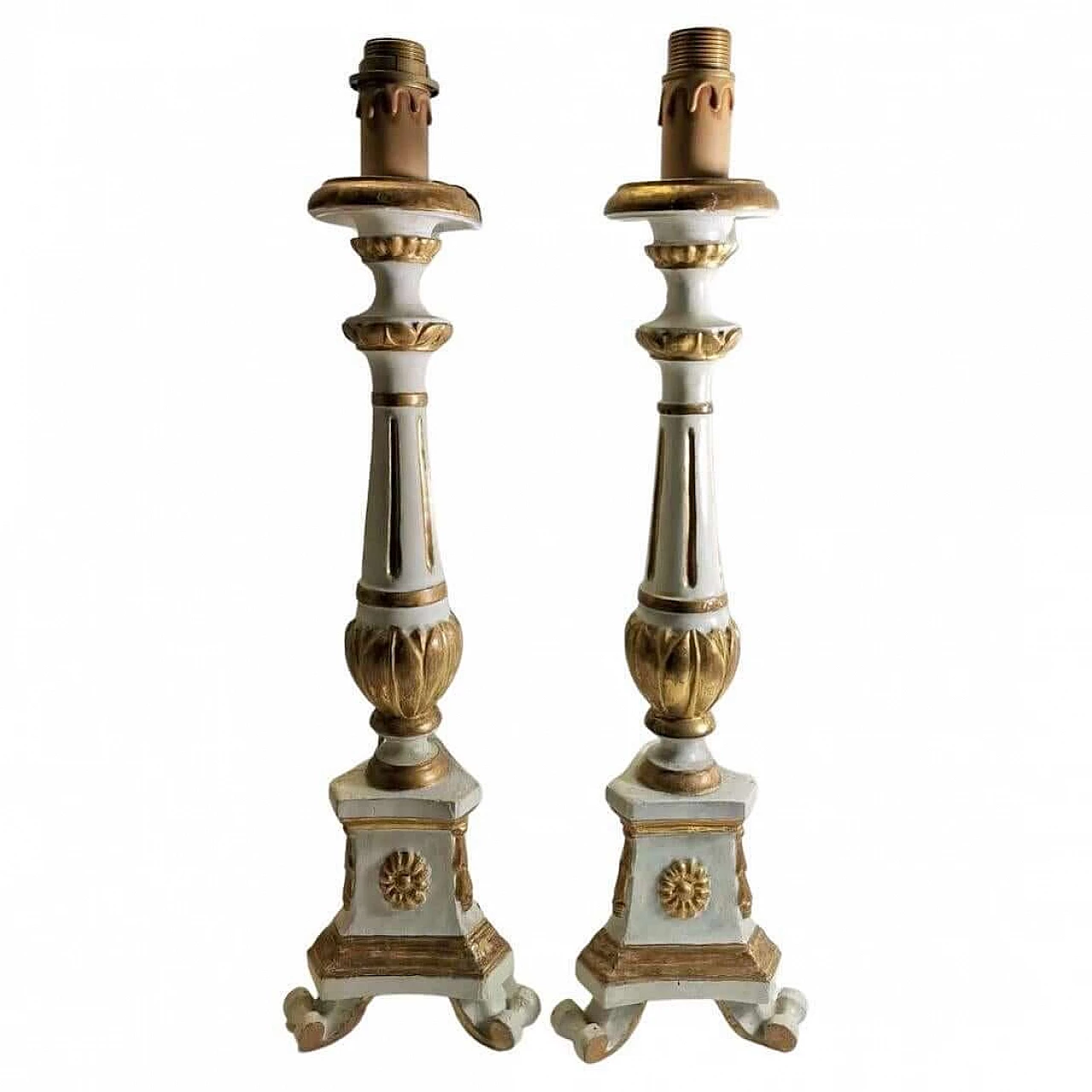Pair of carved and gilded wooden altar candlesticks, 18th century


A particular, rare and antique pair of altar candlesticks; they are made of carved wood, painted with white lacquer and finished with original gold leaf gilding; the solid and well-defined shaped base, with curly feet, supports a proportionate and slender stem; the gilding is not invasive but aesthetically very elegant and harmonious; their height allows them to be used also from the floor. They have been electrified by placing mock candles on the top, they can be used with decorative light bulbs, or you can have a personalised lampshade made to your liking. The balanced and harmonious overall appearance, from top to bottom of each candelabrum, shows the wonderful attention to detail of Italian craftsmanship of the period. The torch-shaped candelabrum is a liturgical decoration found in every church, once placed on the ground and only later on the altar; its use dates back to the very origins of the Church and is clearly and inextricably linked to the symbolism of Light as an expression of Faith, Hope and the Resurrection of Christ. Regardless of the environment in which it was placed, the candlestick has always played an important role in people's lives as a protective element against darkness and gloom. A curiosity about these candlesticks: the fact that the objects have a well-finished front and an unadorned back suggests that the church of destination was poor or country and could not afford luxury furnishings, so the candlesticks were commissioned to a small carpenter with the instruction that they should be cheap but striking; the skilful and intelligent craftsman perfectly executed the two pieces of wood then tried to save money on painting (it was in gold leaf! ) and then painted and decorated only the front of the candelabrum, the one facing the faithful, leaving the rear one incomplete, which would have remained hidden from the crowd! Surely, intended for everyday use, they were placed on the high altar or in a walled chapel and showed all their elegant scenic richness by hiding the absence of decoration on the back! We bought them some time ago from a wise old antique dealer in Gubbio (Umbria-Italy) who assured us with his experience that they were made in Città di Castello (Umbria-Italy) between 1750 and 1760. We should remember that the art of woodworking in Umbria has a long tradition rooted in the Renaissance when local masters (Todi, Città di Castello, Gubbio, Assisi) created extraordinary wooden works to embellish churches, convents and cathedrals.
ID: 4672-1646502107-34376
